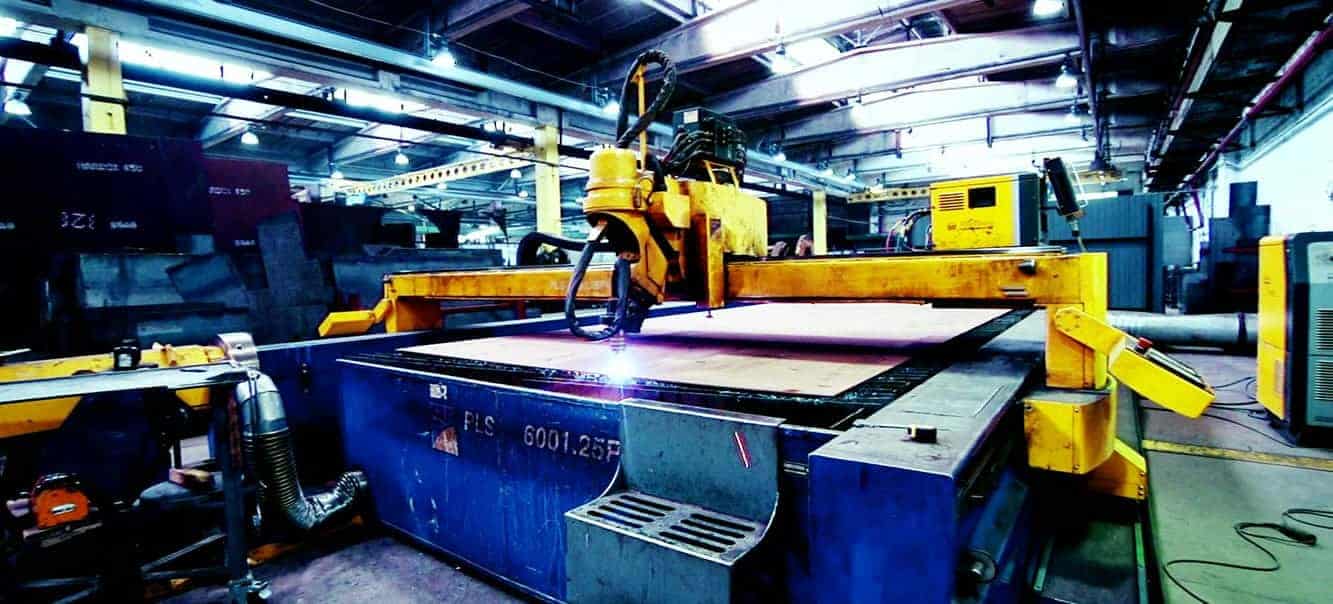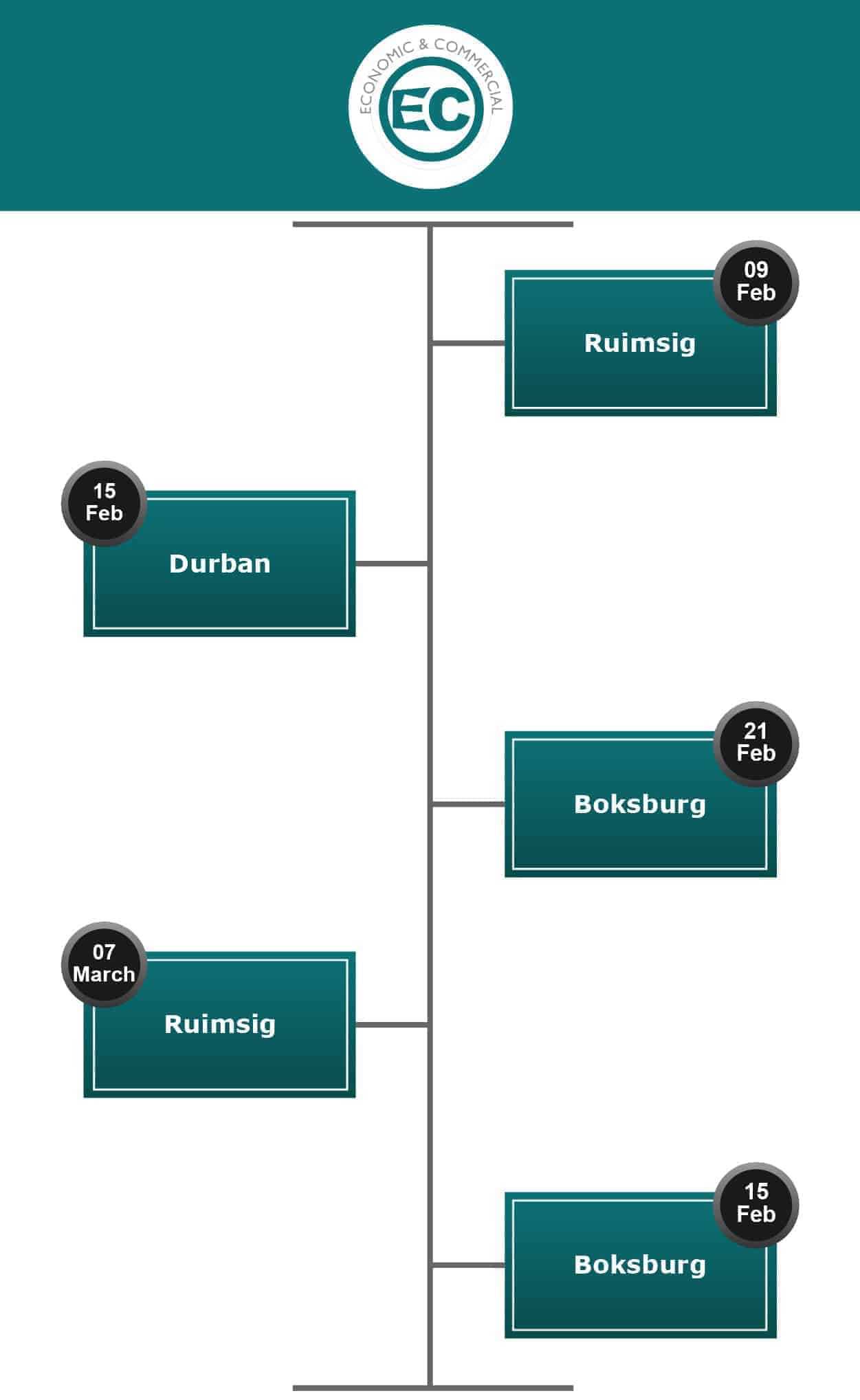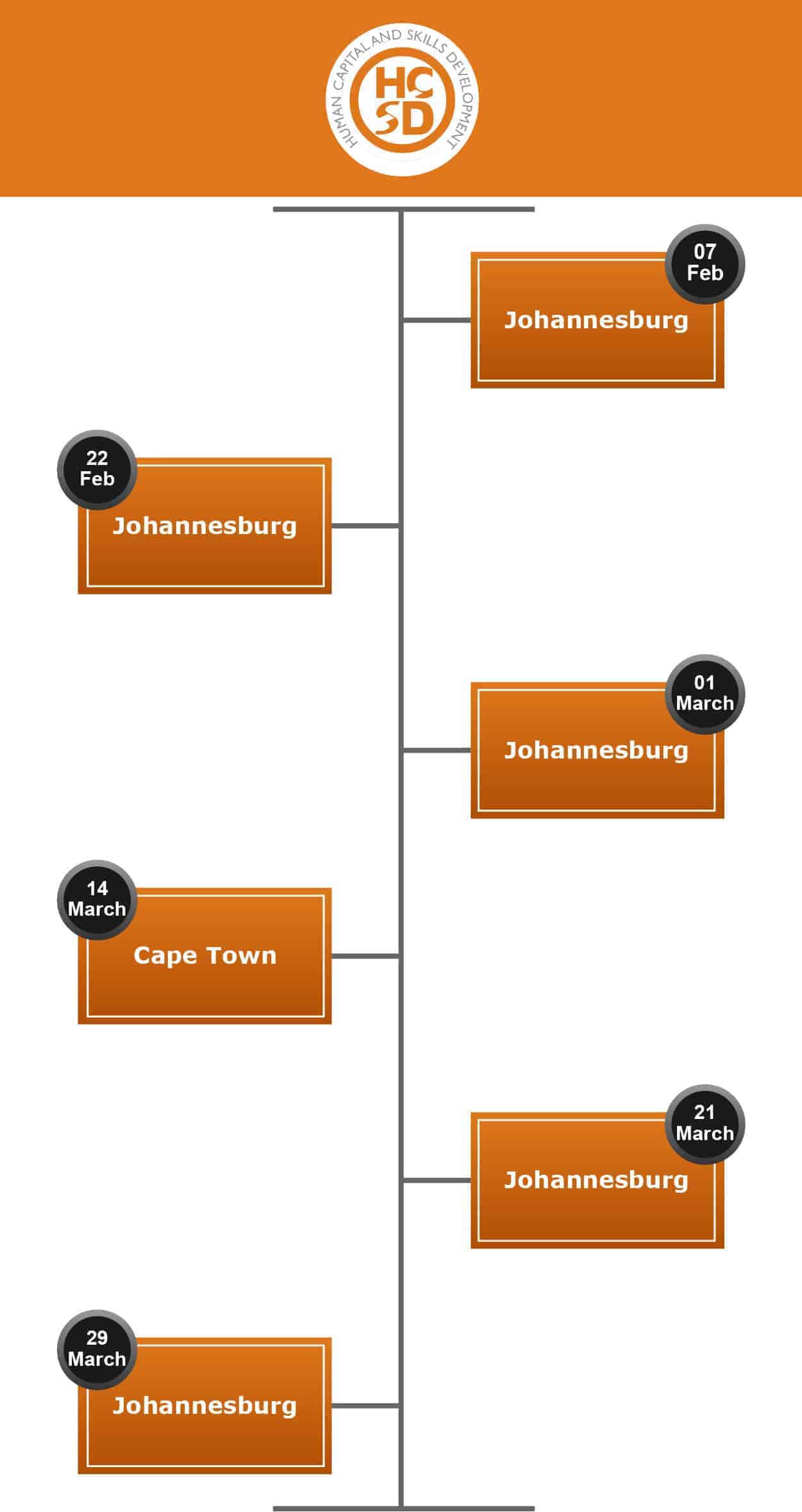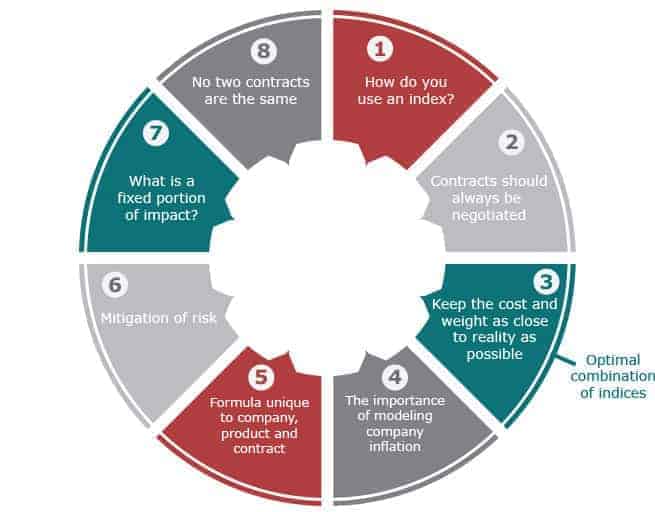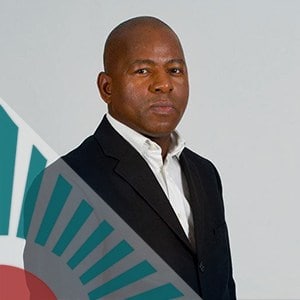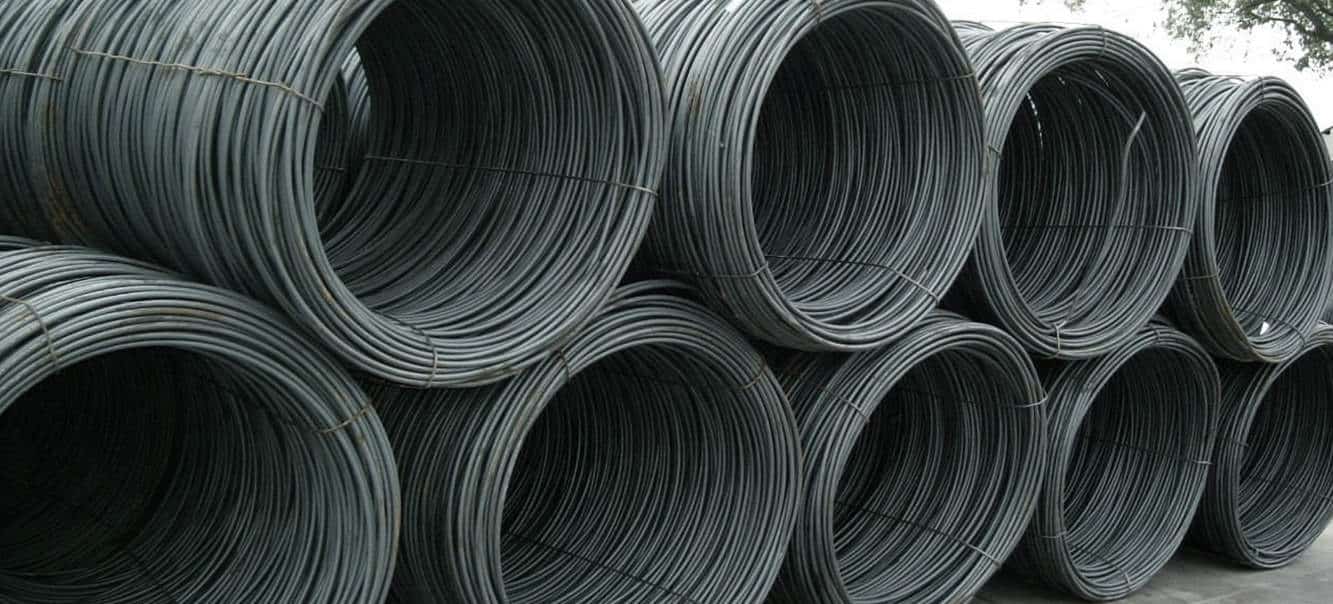SEIFSA CONFIDENT ABOUT A REBOUND IN METALS AND ENGINEERING SECTOR
SEIFSA IS WORRIED BY THE ANNOUNCEMENT OF THE U.S DEPARTMENT OF COMMERCE IN ITS ANTIDUMPING DUTY INVESTIGATIONS OF IMPORTS OF CARBON AND ALLOY STEEL WIRE ROD FROM SOUTH AFRICA
Johannesburg, 8 February 2018 – The latest preliminary production data for the metals and engineering (M&E) sector, released by Statistics South Africa (StatsSA) this afternoon, reflect a slowdown in production in December 2017, despite a 2% increase in the broader manufacturing production during the same period, Steel and Engineering Industries Federation of Southern Africa (SEIFSA) Economist Marique Kruger said today.
The preliminary StatsSA data revealed that production in the M&E sector decelerated to 19.3 % in December 2017 on a month-on-month basis, when compared to the 1.0% recorded in November 2017. Ms Kruger said the enhanced volatility in the data was partly accounted for by the seasonal effect.
Ms Kruger said notwithstanding a favourable global growth outlook, “constrained domestic conditions” did not help in sustaining the upswing in the M&E sector production recorded in November 2017.
The poor month-to-month performance of the M&E sector in December 2017 is inconsistent with the general growth in the annual production recorded by the entire M&E sector for the full year 2017. Companies in the sector have yet to benefit from the improved annual production recorded last year as challenges prevalent to the sector still remain. Some of these include under-utilisation of capacity, high unit labour costs and low productivity levels, which negatively impact on margins and net operating surplus levels,” Ms Kruger said.
She added that the performance of key economic indicators for the M&E sector – such as the Producer Price Index (PPI) for intermediate manufactured goods and the Purchasing Managers Index (PMI) – were also crucial in bolstering margins and supporting further growth prospects in the sector.
On average, the PPI for intermediate manufactured goods decreased from 6,8% in 2016 to 4.0% in 2017, while the average PMI decreased from 49.1 in 2016 to 47.4 in 2017. Ms Kruger said while falling prices were beneficial to buyers of the M&E sector’s products, the same could not be said about the businesses in the sector which were concerned about declining profit margins.
She said the Federation will continue to track the M&E production data and was optimistic that the January 2018 metals and engineering production number would rebound.
Issued by:
Ollie Madlala
Communications Consultant
Tel: (011) 298 9411
Email: ollie@seifsa.co.za
Web: www.seifsa.co.za
SEIFSA is a National Federation representing 23 independent employers. Associations in the metals and engineering industries, with a combined membership of 1600 companies employing around 200 000 employees. The Federation was formed in 1943 and its member companies range from giant steel-making corporations to formed in 1943 and its member companies range from giant steel-making corporations to micro-enterprises employing few than 50 people.
THE LATEST LABOUR LAW DECISIONS AND ANALYSIS, STRAIGHT TO YOU! 9 MARCH 2018
Venue: Johannesburg Country Club, Auckland Park
Time: 09:00 – 15:00
DATE: 9 March 2018
Seminar: LABOUR LAW: NEW DEVELOPMENTS AND THE CHANGING LANDSCAPE
SEIFSA has taken it upon itself to leverage our outstanding legal talent to bring labour law experts and practitioners in the metals and engineering industry up-to-date with regards to current developments in labour law.
Our goal is to ensure that you are in the know about the latest labour law court decisions that have re-shaped the labour law landscape. You will be empowered to apply these principles in your own environment and safeguard your compliance with labour law rules. The outcome is to encourage your Industrial relations practitioners in diligently dealing with labour law issues in the workplace, and in the dispute resolution forums such as the CCMA and the Bargaining Councils.
Therefore giving you control of how to respond to unfair labour practices, in order to protect your businesses.
Bridgette Mokoetle, Advocate Zach Might, and Michael Lavender bring more than 50 years of experience combined to bear on the subject and will each be conducting presentations which are practical and contain elements which will be easy to implement at your company.
The following people will find this course vital to their everyday work experience:
- Human Resources Practitioners
- Company secretaries
- Labour Relations (LR) Practitioners
- Bargaining council arbitrators
- Line Managers responsible for a HR/LR function
- Legal Practitioners
IR&LS Workshops February to March 2018
February to March - Theory and Calculation of Contract Price Adjustment
February to March - Skills Development Planning and Reporting
INFOGRAPHIC: 8 Things You Need to Understand About Contract Price Adjustment
METALS AND ENGINEERING SECTOR EXPECTED TO RECORD A SECOND CONSECUTIVE YEAR OF GROWTH IN 2018
JOHANNESBURG, 2 FEBRUARY 2018 – After three long years of poor performance, the metals and engineering sector is expected to grow for a second consecutive year in 2018, the Steel and Engineering Federation of Southern Africa (SEIFSA) said today.
Speaking at the launch of its authoritative State of the Metals and Engineering Sector Report 2018 to 2019 in Johannesburg this morning, SEIFSA Chief Economist Michael Ade said the metals and engineering sector – which has been in decline for three consecutive years – is poised for 1,1% growth this year, following an impressive 2,7% growth in 2017.
Dr Ade said this prognosis is supported by global economic growth, which remained fairly robust in 2017, aided by a rebound in investment and trade, against the backdrop of benign financing conditions, generally accommodative policies, improved confidence and the dissipating impact of the earlier commodity price collapse.
He said 2017 was a much better year for the metals and engineering sector, which rebounded from the recession in preceding years, registering a 2.7 percent growth “despite facing serious structural challenges”. He said the momentum was expected to continue in 2018.
“Despite the current potential to improve on margins in the M&E sector being fragile due to domestic headwinds, all indications are that the sector will record another increase in growth during 2018, barring any major disruptions to production,” Dr Ade said
He said commodity prices recovered last year and are expected to gain momentum in 2018, thereby strengthening exports and improving growth prospects for commodity exporters in emerging markets (along with enhanced capital inflows).
“However, it is unclear how long the positive outlook will continue, given the volatility in commodity prices,” he said.
Dr Ade said downside risks include disorderly financial market movements, negative effects of borrowing costs, as well as rising trade protectionism or geo-political risk which could also negatively affect confidence, trade and overall economic activity.
Dr Ade said the prognosis also aligned with the outlook for an improving – but subdued – domestic growth underpinned by positive projections for fixed capital formation, better domestic trade conditions and reduced exchange rate volatility.
“Our position is also influenced by positive growth prospects for key industries which are important markets for the M&E sector’s intermediary products and are crucial in the sector’s value chain,” Dr Ade said.
However, he cautioned that the recent downgrade of South Africa’s sovereign credit ratings to junk status by Fitch and Standard and Poor’s would have the propensity of increasing borrowing costs and the general cost of doing business, thus negatively affecting production and fixed investment into the sector and adding to its structural challenges.
The pertinent dynamics of the sector are reviewed in detail in the current edition of SEIFSA’s State of the Metals and Engineering Sector Report 2018 to 2019, which SEIFSA CEO Kaizer Nyatsumba described as “brimming with invaluable information on the sector’s historical and future performance”. The publication provides an update of the sector and invaluable insights to stakeholders, including potential investors.
“I have not the least doubt that all who closely monitor the fortunes of the broad metals and engineering sector and its sub-sectors in Southern Africa, and those with even a passing interest in it and its related sectors, will find the State of the Sector Report invaluable,” said Mr. Nyatsumba.
Issued by:
Nuraan Alli
Sales Manager
Tel: (011) 298 9436 and 083-788-1380
Email: nuraan@seifsa.co.za
Web: www.seifsa.co.za
SEIFSA is a National Federation representing 23 independent employers. Associations in the metals and engineering industries, with a combined membership of 1600 companies employing around 200 000 employees. The Federation was formed in 1943 and its member companies range from giant steel-making corporations to formed in 1943 and its member companies range from giant steel-making corporations to micro-enterprises employing few than 50 people
From the Chief Executive Officer’s Desk - January to February 2018
19 January 2018From the CEO's Desk
Here we are, at the beginning of 2018, with so much promise in the air. After eight lost years of the Jacob Zuma presidency, finally it seems that the country is on the verge of solid leadership and economic stability.
In years to come, the election of Cyril Matamela Ramaphosa as the 13th president of the governing African National Congress (ANC) in its 106-year history may be seen to have been a major turning point in our fortunes as a country. Unlike his predecessor – who is likely to have been ejected from office by the time this issue of SEIFSA News is published – Ramaphosa can legitimately be described as a man of integrity who works hard and leads by example.
Uniquely among his fellow contestants for the position of ANC president ahead of the organisation’s 54th national conference in Johannesburg, Ramaphosa combines experience and expertise in labour, business and government. He has a firm grasp of how the economy works and knows and appreciates the fact that it is business that creates jobs, and not governments, and that South Africa is involved in a never-ending competition for foreign investment with many other countries around the world.
He enjoys widespread respect both here and abroad, and has served on the Atlanta-based Coca-Cola Company’s International Board of Advisers, among other senior positions. Among his many achievements, his co-architecture, along with Roelf Meyer and others, of South African’s Interim Constitution during the multi-party talks in the Convention for a Democractic South Africa (CODESA) and of the current Constitution that was subsequently adopted by the National Assembly in 1996 must rank among the highest.
Following his election as ANC president in December, Ramaphosa now stands a good chance of becoming South Africa’s next Head of State, should the organisation win in the forthcoming national elections next year. Among the seven individuals who contested the ANC presidency, he it was who stood the best chance by far of stanching the organisation’s recent haemorrhaging of votes. While in recent years and months it looked like South Africa was heading for an opposition-led coalition government next year, Ramaphosa’s election may well see the ANC narrowly winning the 2019 elections.
Were he to emerge as South Africa’s President next year or sooner, Ramaphosa will have accomplished his long-held dream – which, in subsequent years, even he would have begun to think unattainable – and the ambition that democratic South Africa’s Founding Father, Nelson Mandela, had for him. After all, it was Ramaphosa that Mandela wanted to appoint Deputy President of the country when the latter became our Head of State in 1994, but he was strongly prevailed upon by those in the ANC who had been in exile to go with Thabo Mbeki, instead.
Cyril Ramaphosa, then, is a man in whom the saintly Madiba had lots of confidence.
His final election as ANC president has marked the end of a terrible chapter in our democratic era and the beginning of a new one. Unlike his predecessor, he is a constitutionalist who is actively championing good governance and a meaningful partnership involving the Government, business and labour. An astute businessman, he has placed a deserved emphasis on growing and transforming our economy.
Immediately after Ramaphosa’s election as ANC president, many commentators expressed legitimate concerns about the composition of the leadership surrounding him in the ANC top six. Some of the individuals surrounding him are not exactly known for their shining credentials as anti-corruption crusaders, and some have featured prominently in the recent Gupta-leak e-mails. They are, therefore, unlikely to share his enthusiasm to throw the book at those allegedly behind our rampant corruption.
I argued elsewhere at the time that, while legitimate, those concerns should not be exaggerated. I pointed out that the ANC leadership is made up of more than just the five men and one woman at the apex of the organisation. It also comprises the 80-member National Executive Committee (NEC), which is the highest decision-making body between conferences. I added that there are men and women on that structure who are just as keen to rid the organisation and the country of corruption and who would like to rescue whatever equity remains of Brand ANC.
The narrow margin by which Ramaphosa won the contest against Dr Nkosazana Dlamini-Zuma – who was volubly supported by some of the most disagreeable and controversial characters in our politics – also raised the understandable concern that there were almost as many delegates at the ANC’s 54th national conference who were opposed to him as those who supported him. It was understandable that some people would worry that Ramaphosa would not find the kind of support within his organisation that he needs to redirect the country’s fortunes.
While understandable, that concern ignored the fact that, according to various surveys conducted across the country in the run-up to the conference, the vast majority of ANC members in all nine provinces preferred Ramaphosa for the ANC presidency. The small margin of his victory was indicative of the determined efforts by those with vested interests who were threatened by the prospect of a Ramaphosa presidency, among them Jacob Zuma, who worked very hard to persuade as many ANC branches and delegates as possible not to support his candidature.
As I predicted at the time, now that a Ramaphosa presidency is a reality, many of those who were successfully lobbied against him have begun to turn their backs on Zuma, who is now yesterday’s man, and are actively seeking to be in Ramaphosa’s good books. In the weeks and months to come they will work even harder to ingratiate themselves to him and his fellow officials in order to improve their chances of deployment into cushy positions in government, the public service and State-owned companies.
As often happens in the ANC, in the coming months and years those to be elected onto the leadership of the various leagues – Women’s, Youth and Military Veterans – and provincial structures will most likely be made after the image of the leader. That means that, in the months and years to come, the number of overtly pro-Ramaphosa individuals in strategic positions within the ANC will increase, thus making it possible for him to re-orientate the organisation and, hopefully, to advance South Africa’s interests.
So far, Ramaphosa and his team have made a most encouraging start. Not only have they insisted on the prosecution of those against whom allegations of State capture and general malfeasance have been made, but they have also made wholesale changes to the Eskom Board of Directors, on the eve of the annual World Economic Forum gathering in Davos, Switzerland. They have made it abundantly clear to Zuma and his remaining defenders that the ANC leadership is the centre of authority, with Zuma and others in Government having to implement ANC policy.
In other words, although at the time of writing Ramaphosa was still Deputy President of the country and Zuma was President, there is no doubt at all that, as of 20 December 2017, Ramaphosa is Zuma’s boss – including in Government. For as long as he remains our Head of State, Zuma has to take instructions from Ramaphosa, as has happened in the case of the appointment of the Ngoepe judicial commission of enquiry into State capture.
Notwithstanding some controversial resolutions adopted at the ANC conference, such as on land restitution without compensation, there is no doubt in my mind that a Ramaphosa-led ANC will do everything possible to revive the economy and to forge a working partnership involving Government, business and labour. I am confident that he and his team will do everything possible to undo the damage done to South Africa by his predecessor and to win back the civilised world’s respect for South Africa.
There is a good chance, therefore, that, while correctly insisting on the need for “radical economic transformation”, the Government will be much more sympathetic to business’s concerns and more accessible for meaningful engagement. It is important that business should not be found wanting in this regard.
SEIFSA will, on its own and through Business Unity South Africa, take full advantage of the blowing winds of change in order to engage meaningfully with policy makers.
Kaizer M. Nyatsumba
Chief Executive Officer
Skills Development and Planning Seminar 2018
SEIFSA is proud to announce that we will be hosting SEIFSA’s Annual Skills Development Planning and Reporting Seminar on 13 February, 2018. We have once again managed to harness a group of dynamic and well informed captains of industry to present various relevant topics at a micro and macro level that will benefit both you and your organisation.
• Christia Uys, Weir Minerals;
• Greg Mitchell, Honeycomb BBBEE;
• Winston Adams, Merseta;
• Rupert Ndlovu, SARS;
• Melanie Mulholland, SEIFSA
Who should attend?
• Members who are new to the skills development reporting requirements for pivotal and mandatory grants and who wish to ensure that they are at the forefront of effective implementation.
• Skills development facilitators, human resource managers, training managers, managers, owners and managers of small and medium enterprises, experienced managers who would like to brush up on their knowledge and get to grips with the NEW Seta Management System.
The workshop will cover
• Understand the merSETA criteria and requirements for submission of the skills planning and reporting templates due on 30 April 2018
• Highlight the benefits and uses of the NEW Seta Management System (SMS) for effective skills planning and reporting
• Work through the NEW Seta Management System templates including the PIVOTAL Plan and PIVOTAL Training Report
• Understand the labour representative’s role in the approval process
• Discuss the Training Committees’ role and responsibilities for the 2018/2019 mandatory and pivotal grant submission requirements
• Highlight and align current policy expectations and implementation objectives
• Share insights with colleagues and peers
• Participate in group exercises and discussions to gain from the best practice experiences of other companies. Network with other skills development facilitators so that you can handle skills development planning and implementation with confidence.
Programme
08h00 – 09h00: Registration and refreshments
09h00 – 09h15: Welcome, introduction and setting the scene. Melanie Mulholland, SEIFSA Human Capital & Skills Development Executive
09h15 – 09h45: Human Resource Development in the metals & engineering environment. A company perspective. Christia Uys – HR, Weir Minerals Africa (Pty) Ltd
09h45 – 10h15: The BBBEE codes and its impact on skills development. Greg Mitchell – Honeycomb (BBBEE Agency)
10h15 – 10h45: Mid-morning refreshments
10h45 – 11h15: Maximising the Tax Benefits for Skills Development. Rupert Ndhlovu – SARS, Regional Manager
11h15 – 12h00: merSETA Perspective for 2018/19 reporting year. Winston Adams, merSETA
12h00 – 12h45: Lunch
12h45 – 14h00: Workplace Skills Plan (WSP), Annual Training Report (ATR) and PIVOTAL Plan and Report Templates, Guidelines and SMS – Melanie Mulholland, Human Capital & Skills Development Executive
14h00: Closure
SEIFSA IS WORRIED BY THE ANNOUNCEMENT OF THE U.S DEPARTMENT OF COMMERCE
SEIFSA IS WORRIED BY THE ANNOUNCEMENT OF THE U.S DEPARTMENT OF COMMERCE IN ITS ANTIDUMPING DUTY INVESTIGATIONS OF IMPORTS OF CARBON AND ALLOY STEEL WIRE ROD FROM SOUTH AFRICA
JOHANNESBURG, 11 JANUARY 2018 – The Steel and Engineering Industries Federation of Southern Africa (SEIFSA) is very worried by the recent announcement of the U.S. Department of Commerce’s affirmative final determinations in the antidumping duty (AD) investigations of imports of carbon and alloy steel wire rod from South Africa and Ukraine.
This is following an initial parallel investigations launched in October 2017, to determine if American producers have been harmed by carbon and alloy steel wire rod imports from Italy, the Republic of Korea, South Africa, Spain, Turkey, Ukraine and/or the United Kingdom, by both the U.S Department of Commerce and the U.S International Trade Commission (ITC).
The AD law provides U.S businesses and workers with a transparent, quasi-judicial, and internationally accepted mechanism to seek relief from the market distorting effects caused by injurious dumping of imports into the United States, establishing an opportunity to compete on a level playing field. For the purpose of AD investigations, dumping occurs when a foreign company sells an imported product in the United States at less than fair value.
“In the South Africa investigations, the U.S. Department of Commerce assigned a dumping rate of 142.26 percent for the collapsed entity composed of ArcelorMittal South Africa Limited, Scaw South Africa (PTY) Ltd (also known as Scaw Metals Group), and Consolidated Wire Industries, based on adverse facts available due to its failure to respond to Commerce’s request for information. Davsteel Division of Cape Gate (Pty) Ltd., the other mandatory respondent, was found to have no shipments of subject merchandise during the period of investigation. All other producers/exporters in South Africa have been assigned a dumping rate of 135.46 percent,” said SEIFSA’s Chief Economist Michael Ade.
Upon publication of the final affirmative AD determinations, Commerce will instruct U.S Customs and Border Protection (CBP) to collect cash deposits equal to the applicable final weighted-average dumping rates.
SEIFSA is extremely concerned that the latest developments have the potential of further dampening production in the local steel industry, reducing steel exports to the U.S and stifling the steel industry of much needed foreign reserves. “This is especially given that in 2016, imports of carbon and alloy steel wire rod by the U.S from South Africa was valued at an estimated $7.1 million,” Dr Ade said.
The ITC is scheduled to make its final determination on or about of the 22nd of February 2018. If the ITC makes affirmative final determination that imports of carbon and alloy steel wire rod from South Africa and/or Ukraine materially injure, or threaten material injury to, the domestic industry, the U.S Department of Commerce will issue AD orders. If the ITC makes negative determinations of injury, the investigations will be terminated.
SEIFSA will continue to monitor the situation closely, in light of the final determination by the ITC.
Issued by:
Jackie Molose
Marketing, Sales and Communications Executive
Tel: (011) 298 9411 and 082 602 1725
Email: jackie@seifsa.co.za
Web: www.seifsa.co.za
SEIFSA is a National Employers Federation representing 23 independent employer Associations in the metals and engineering industries, with a combined membership of 1600 companies employing around 200 000 employees. The Federation was formed in 1943 and its member companies range from giant steel-making corporations to micro-enterprises employing few than 50 people.

